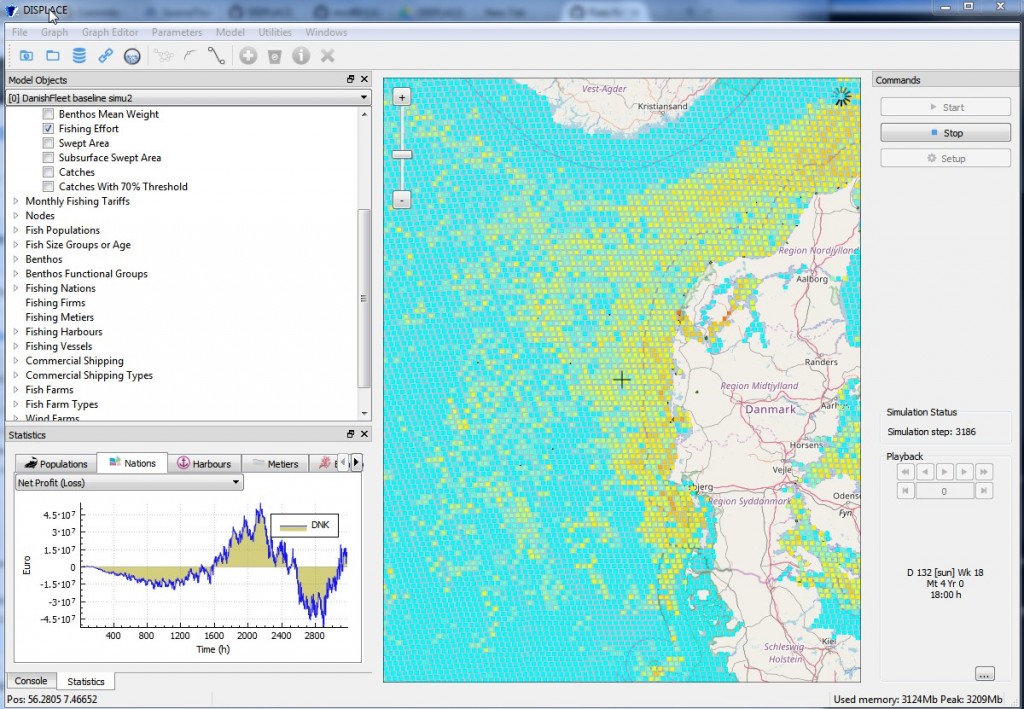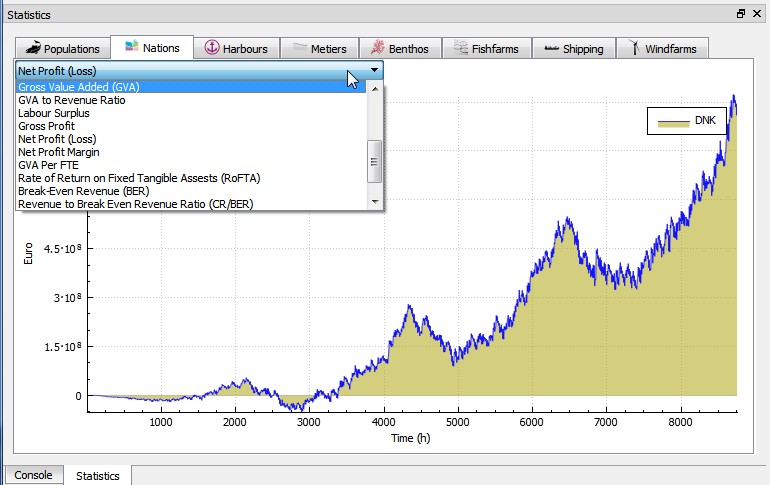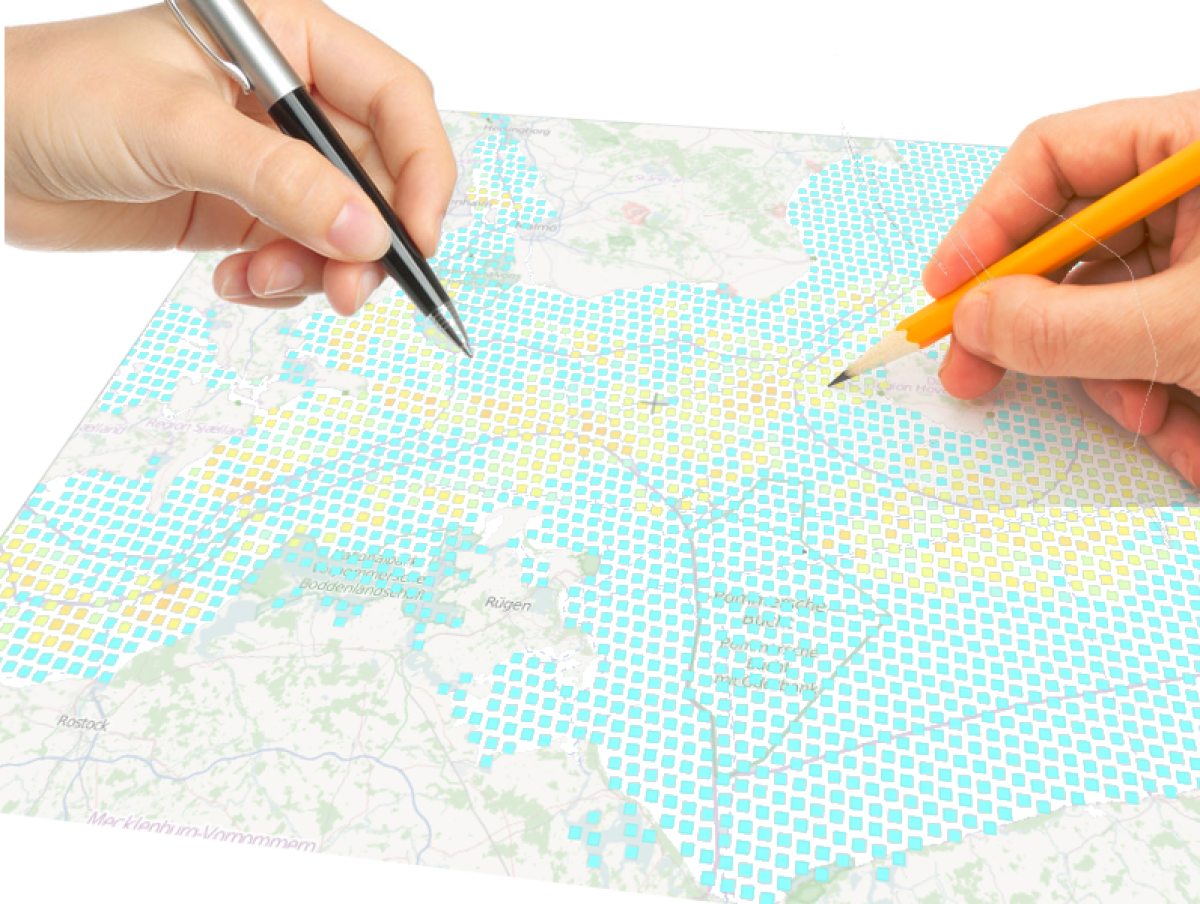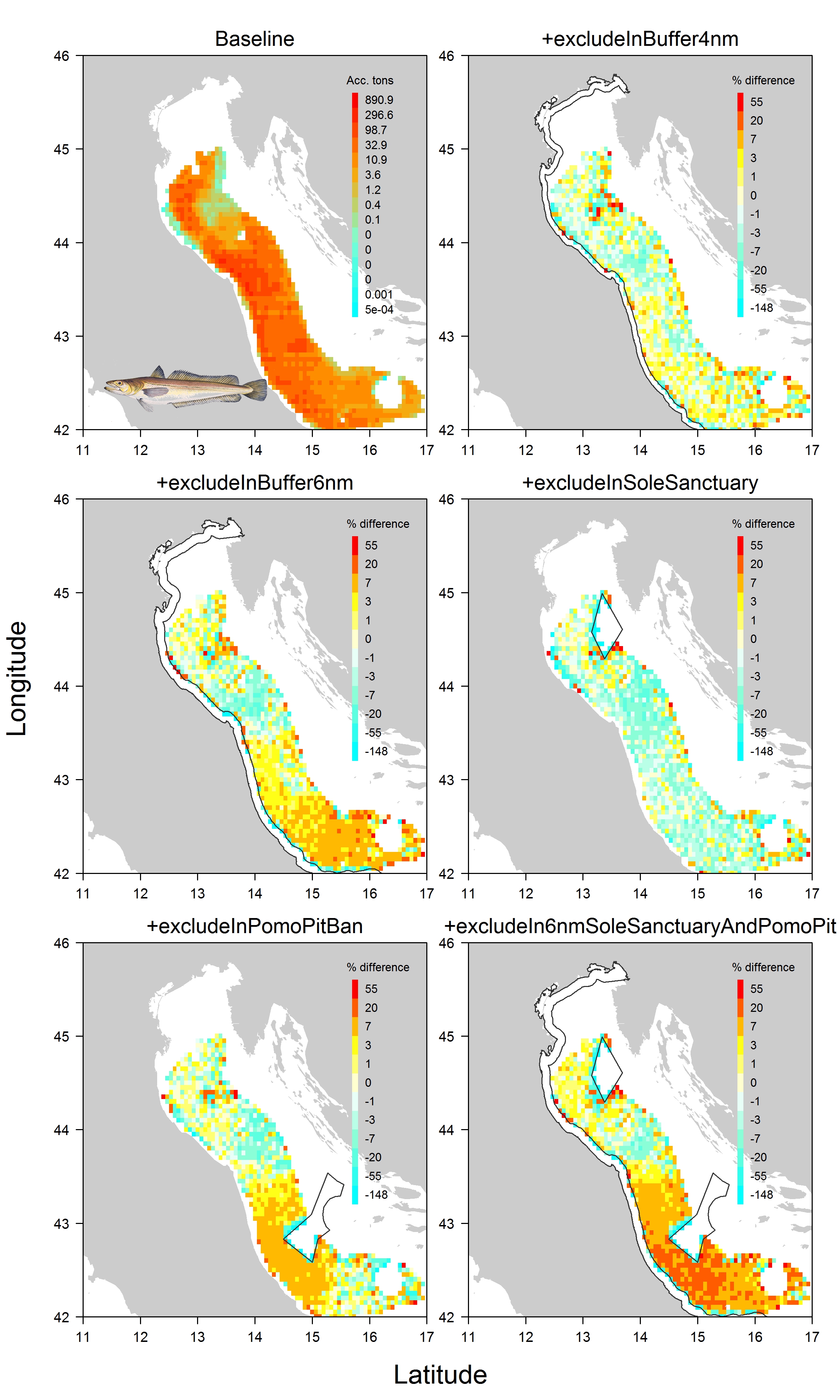

DISPLACE is a fisheries spatial ecosystem impact assessment tool that can be used to look at the consequences of fisheries and the benefits from managing them (including spatial fisheries closures) for a sustainable use and a viable economy of fisheries exploiting marine resources (fish, shellfish and marine invertebrates). The model simulates the fishing of individual vessels and their capacity to deploy their effort at fishing when constrained by spatial or temporal closures, other management, and including spatial restriction from other concurrent uses of the sea (fish farms, commercial shipping lanes, wind farm parks).
In this context, DISPLACE provides a basis for testing scenarios and projects the amount of income generated by national fishing fleets (or the economics of some finer segmentation such as fishing harbor communities) over months, quarters and years. We track aggregated economics and measure Income, Costs, Economic Indicators, Capital value, Profitability and development trends. DISPLACE is also a platform useful to compare fleet segments regarding their respective fuel efficiency and relative impacts by for example looking at the income issued from the sea for each unit of seabed area swept by the fishing gears.
(Disclaimer! Attached screenshots in this margin are very preliminary outcomes and should not be used to give any kind of advice neither to deduce any kind of productivity levels)






